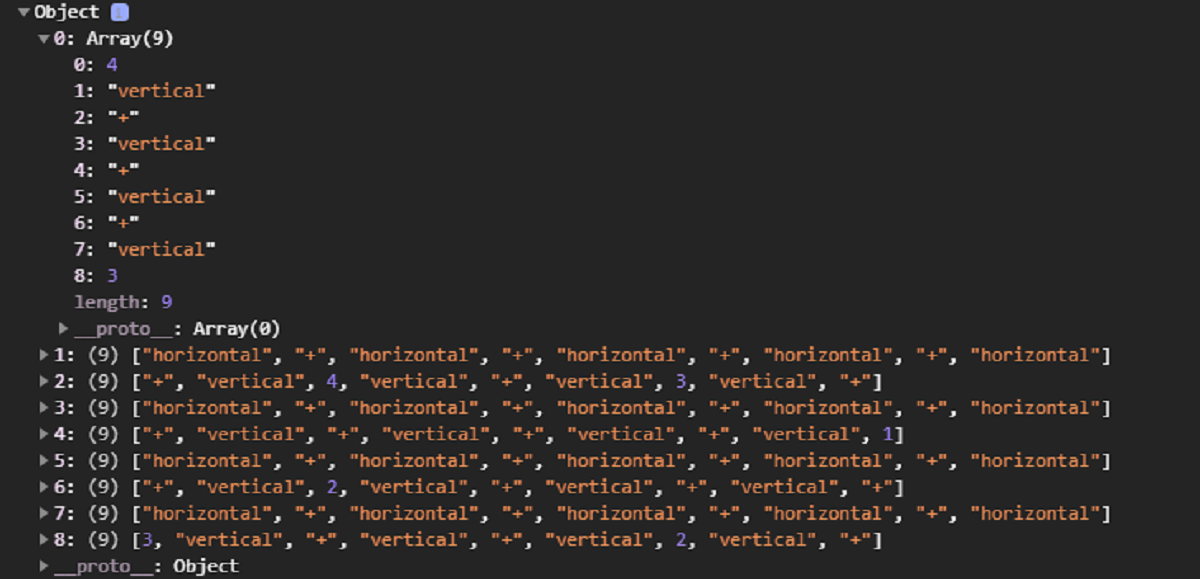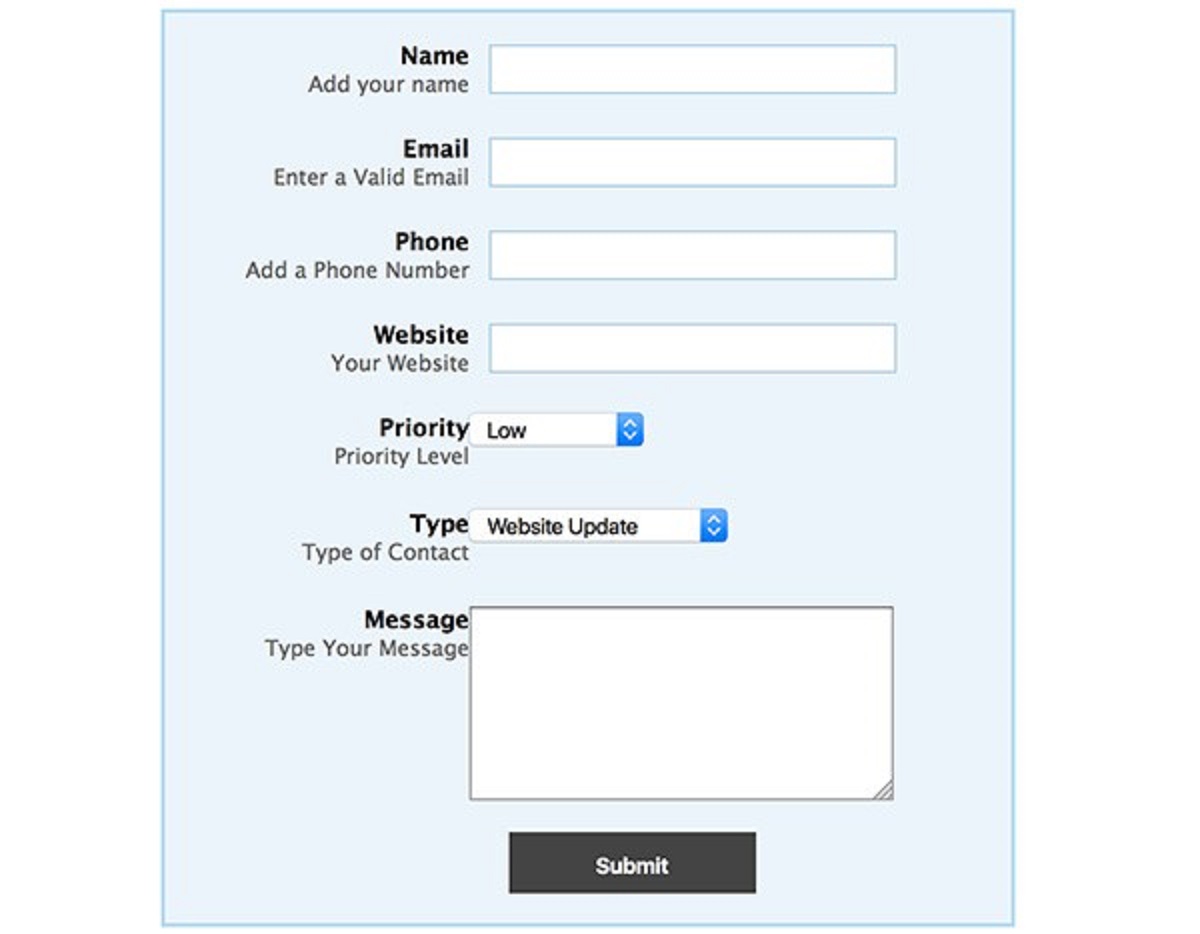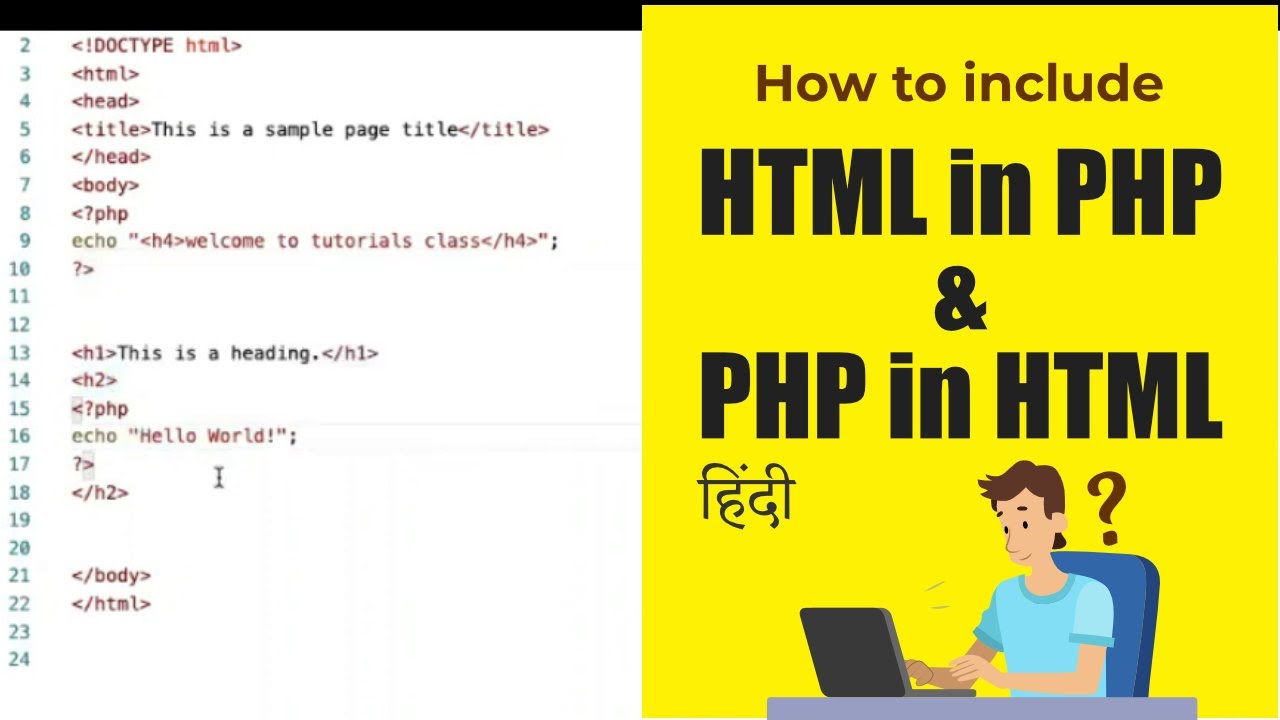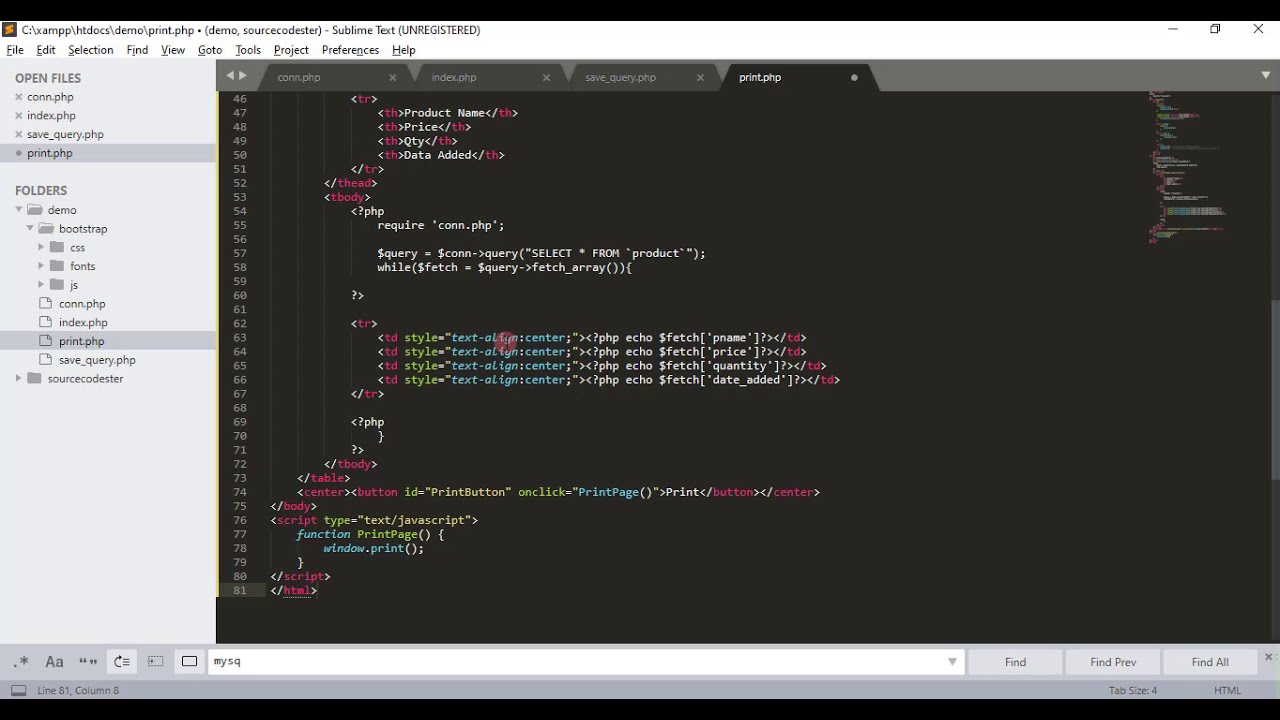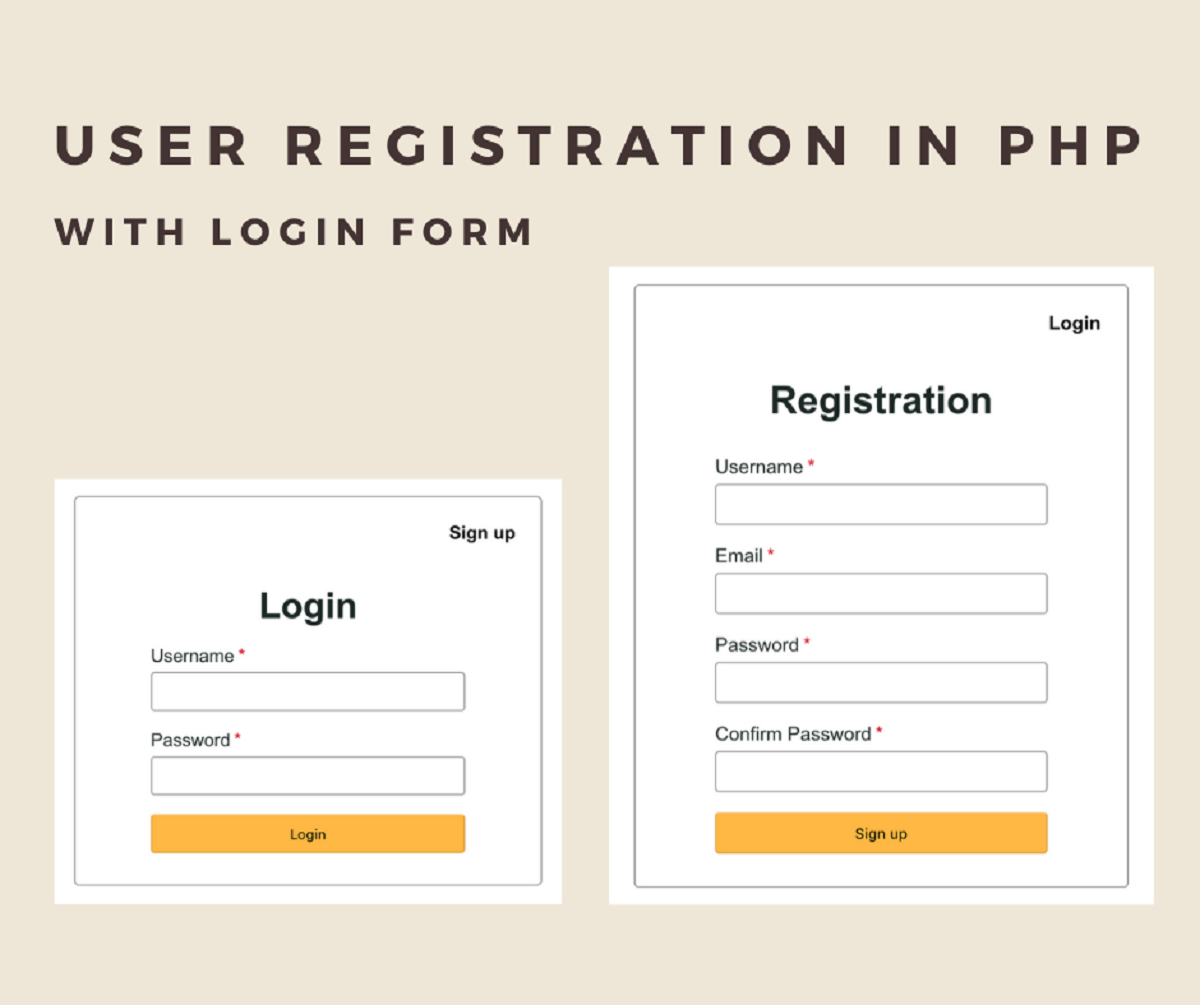Introduction
When developing websites or web applications using PHP, it’s common to encounter situations where you need to display the value of a PHP variable within an HTML document. This can happen when you want to show dynamic data such as user information, database query results, or computed values directly in the HTML markup.
Displaying a PHP variable in HTML can be accomplished in several ways, each with its own advantages and use cases. In this article, we will explore various methods to achieve this task, providing you with a comprehensive guide on how to seamlessly integrate PHP variables into your HTML output.
Understanding these methods will not only allow you to personalize and customize your web pages dynamically, but also enhance the user experience by presenting real-time information or data.
Before we delve into the different techniques, it’s important to note that all examples assume basic knowledge of PHP and HTML, as well as the ability to write and execute PHP scripts within an HTML environment.
Now let’s explore the various methods to display PHP variables in HTML so that you can choose the one that best suits your needs and requirements.
Method 1: Embedding PHP Variable within HTML
One of the simplest methods to display a PHP variable in HTML is by directly embedding it within the HTML tags or attributes. This method allows you to include the variable’s value dynamically wherever you need it in your HTML code.
To embed a PHP variable within an HTML tag or attribute, you can use the PHP opening and closing tags (<?php and ?>) to switch between PHP and HTML modes. Inside the PHP tags, you can echo the value of the variable using the echo or print statement, and concatenate it with the surrounding HTML code using the period (.) operator.
For example, suppose you have a PHP variable named $username that stores the username of the currently logged-in user. You can display it within a paragraph tag as follows:
<p>Welcome, <?php echo $username; ?>!</p>
In this example, the $username variable is surrounded by the echo statement, which outputs its value. The result will be an HTML paragraph containing the message “Welcome, [username]!”, where [username] is the actual value of the variable.
This method can be used anywhere within your HTML code, allowing you to display PHP variables in various parts of your web page, including headings, links, buttons, and more.
It’s important to make sure that the PHP variable is properly escaped or sanitized before embedding it within HTML tags or attributes, especially if the variable contains user-generated content. This helps to prevent cross-site scripting (XSS) attacks and ensures the security and integrity of your web application.
Now that you understand how to embed a PHP variable within HTML, let’s explore another method that offers a more concise and streamlined syntax for displaying PHP variables.
Method 2: Using the echo or print Statement
In PHP, the echo and print statements are commonly used to output data to the browser. These statements can also be used to display PHP variables in HTML.
To use the echo or print statement to display a PHP variable in HTML, you simply write the statement followed by the variable you want to display. For example:
<?php echo $variable; ?>
or
<?php print $variable; ?>
The echo and print statements perform the same function of outputting the value of the variable, but the difference lies in how they handle the output. echo is considered a language construct, while print is a language statement. The main practical difference between them is that echo can output multiple expressions at once, separated by commas, while print can only take one argument.
Using these statements, you can easily display PHP variables anywhere in your HTML code, including within tags, attributes, or even as standalone content. Here’s an example that displays the value of a PHP variable within a heading:
<h1><?php echo $title; ?></h1>
In this example, the $title variable is being echoed within the <h1> tags, resulting in the variable’s value being displayed as the heading of the web page.
Using the echo or print statement provides a straightforward way to display PHP variables in HTML, allowing you to seamlessly integrate dynamic data into your web pages.
Now that you’re familiar with using the echo and print statements, let’s explore another method that offers a more concise syntax for displaying PHP variables.
Method 3: Using a PHP Shorthand Notation
In PHP, there is a shorthand notation that allows you to display PHP variables directly within HTML without using the echo or print statement. This shorthand syntax is simple, concise, and often preferred by developers for its readability and ease of use.
To use the PHP shorthand notation, you can enclose the variable within <?= ?> tags. For example:
<h2><?= $subtitle ?></h2>
In this example, the $subtitle variable is wrapped within the shorthand tags, and its value will be displayed as the content of the <h2> heading element.
The PHP shorthand notation is a more concise alternative to the echo or print statement, as it eliminates the need for explicit opening and closing PHP tags. This can make your code cleaner and easier to read, especially when displaying multiple variables within HTML.
It’s important to note that the PHP shorthand notation is only available if the short_open_tag directive is set to true in the PHP configuration. Be mindful of this when using the shorthand notation, as it may not work in all PHP environments.
Using the PHP shorthand notation, you can effectively and efficiently display PHP variables directly within HTML, enhancing the readability and maintainability of your code.
Now that you’re familiar with the shorthand notation, let’s explore another method that involves concatenating PHP variables with HTML strings.
Method 4: Concatenating PHP Variable with HTML
Another method to display a PHP variable in HTML is by concatenating it with HTML strings. This approach allows you to build dynamic HTML content by combining static HTML code with the value of a PHP variable.
To concatenate a PHP variable with an HTML string, you can use the concatenation operator (.). This operator joins two strings together, producing a new string that contains the combined contents of both strings.
For example, let’s say you have a PHP variable called $username that holds the username. You can concatenate it with an HTML string to create a personalized greeting message:
<p>Hello, </p>
In this example, the $username variable is concatenated with the exclamation point and wrapped inside the <p> tags. This results in an HTML paragraph with a greeting message that includes the username.
Concatenation can be used not only within HTML tags but also for creating dynamic HTML content in general. You can concatenate PHP variables with any HTML string, including attributes, classes, styles, or even inline JavaScript code, to achieve the desired result.
It’s important to note that when using concatenation, HTML and PHP code can coexist within the same line, making it easier to create complex, dynamic HTML content without sacrificing readability.
By using concatenation, you can dynamically incorporate the value of a PHP variable into HTML, allowing for personalized and customized web pages.
Now that you’re familiar with concatenation, let’s explore another method that involves using the sprintf() function to format PHP variables within HTML strings.
Method 5: Using the sprintf() Function
The sprintf() function is a powerful tool in PHP that allows you to format strings using placeholders and replace them with the values of PHP variables. This method provides a flexible and concise way to display PHP variables within HTML strings.
To use the sprintf() function, you need to define a format string that includes placeholders for the variables and then pass the variables as arguments to the function. The placeholders are represented by % followed by a character that represents the type of variable.
For example, let’s say you have a PHP variable named $name that holds a user’s name. You can use the sprintf() function to display a personalized greeting:
<h1>Welcome, </h1>
In this example, the %s placeholder is used to represent a string variable. The $name variable is passed as an argument to the sprintf() function and is replaced in the format string, resulting in the user’s name being displayed inside the
tags.
The sprintf() function not only allows you to format strings with variables but also provides additional functionality, such as specifying the number of decimal places for floating-point numbers, padding with zeros or spaces, and more.
This method is especially useful when you need to display PHP variables within complex HTML strings that require specific formatting or when you want to ensure consistent output across different scenarios.
With the sprintf() function, you can easily incorporate the values of PHP variables into HTML strings while maintaining control over their formatting and presentation.
Now that you’re familiar with using the sprintf() function, let’s explore another method that involves displaying PHP arrays in HTML.
Method 6: Assigning the PHP Variable to JavaScript Variable
Assigning a PHP variable to a JavaScript variable allows you to pass data from your server-side PHP code to the client-side JavaScript code, giving you the ability to manipulate and display the data dynamically within your HTML document.
To assign a PHP variable to a JavaScript variable, you can use a combination of PHP and JavaScript syntax. First, you echo or print the value of the PHP variable within a JavaScript block, and then you assign that value to a JavaScript variable using the assignment operator (=).
For example, let’s say you have a PHP variable called $count that holds the number of items in a shopping cart. You can assign its value to a JavaScript variable named cartCount as follows:
<script>var cartCount = ;</script>
In this example, the value stored in the $count variable is echoed within the JavaScript block. The resulting JavaScript code assigns that value to the cartCount variable.
Once the PHP variable is assigned to a JavaScript variable, you can use it to perform various client-side operations, such as updating the content of HTML elements, making AJAX requests, or manipulating the DOM structure of your webpage.
Assigning PHP variables to JavaScript variables is particularly useful when you need to transfer data from the server-side to the client-side dynamically, without the need for page reloads. It allows you to create interactive and responsive web pages that can seamlessly update based on server-side changes.
Keep in mind that when assigning PHP variables to JavaScript variables, you need to be aware of any necessary data type conversions or validations, as PHP variables may need to be properly formatted for JavaScript usage.
By assigning PHP variables to JavaScript variables, you can extend the functionality of your web applications and create dynamic and interactive user experiences.
Now that you’re familiar with assigning PHP variables to JavaScript variables, let’s explore another method that deals specifically with displaying PHP arrays in HTML.
Method 7: Displaying PHP Arrays in HTML
PHP arrays are a powerful data structure that allows you to store and manage collections of values. In some cases, you may need to display the contents of a PHP array in an HTML document, whether it’s a list of items, a table of data, or any other structured representation.
To display a PHP array in HTML, you can iterate over the array using a loop, such as a foreach loop, and generate the desired HTML markup for each element of the array.
For example, let’s assume you have a PHP array called $fruits that contains a list of fruits. You can display the elements of the array as an unordered list (<ul>) in HTML using a foreach loop:
<ul>
</ul>
In this example, the foreach loop iterates over each element in the $fruits array and echoes an <li> HTML tag for each fruit. As a result, you’ll get a bulleted list of fruits when the HTML is rendered.
You can extend this method to display PHP arrays in other HTML structures, such as tables, using nested loops or conditional statements to generate the appropriate markup for each element of the array.
Displaying PHP arrays in HTML allows you to present dynamic and structured data in a visually appealing way. It is particularly useful when working with data retrieved from databases, API responses, or any other data source.
Remember to appropriately handle and sanitize the array data to ensure the security and integrity of your application, especially if the array contains user-generated content.
By iterating over PHP arrays and generating HTML markup for each element, you can seamlessly integrate dynamic data into your HTML documents.
Now that you know how to display PHP arrays in HTML, let’s explore a method that addresses the need to escape HTML tags within PHP variables.
Method 8: Escaping HTML Tags in PHP Variable
Sometimes, the value of a PHP variable may contain HTML tags that need to be displayed as text rather than interpreted as actual HTML markup. In such cases, it is important to escape the HTML tags to prevent them from affecting the structure or appearance of the HTML document.
To escape HTML tags in a PHP variable, you can use the htmlspecialchars() function. This function converts special characters, including HTML tags, into their corresponding HTML entities, ensuring that they are displayed correctly as text within the HTML document.
For example, let’s say you have a PHP variable called $message that holds a user-provided message that may contain HTML tags. You can escape the HTML tags using the htmlspecialchars() function before displaying the variable:
<p><?php echo htmlspecialchars($message); ?></p>
In this example, the value of the $message variable is passed through the htmlspecialchars() function, which replaces any special characters and HTML tags with their respective HTML entities. The resulting text is then displayed within the <p> tags.
Using htmlspecialchars() ensures that the HTML tags in the variable are treated as plain text and not as part of the HTML markup. This is important for security reasons, as it helps prevent potential cross-site scripting (XSS) attacks by neutralizing any malicious or unintended code within the variable.
It’s worth mentioning that while htmlspecialchars() helps to escape HTML tags, it does not provide protection against other forms of code injection or malicious input. You should use additional security measures, such as input validation and sanitization, to ensure the overall integrity of the data.
By escaping HTML tags in PHP variables, you can display user-generated content or dynamic data as text within your HTML documents, ensuring proper rendering and security.
Now that you know how to escape HTML tags in PHP variables let’s conclude our exploration of various methods to display PHP variables in HTML.
Conclusion
Displaying PHP variables in HTML is a fundamental skill when developing dynamic web applications. By incorporating dynamic data into your HTML output, you can create personalized and interactive user experiences.
In this article, we explored several methods for displaying PHP variables in HTML. We started by learning how to embed PHP variables directly within HTML tags and attributes, providing a seamless integration of dynamic content.
We then discussed using the echo or print statements to output the value of PHP variables in HTML. This method offers simplicity and flexibility, allowing for dynamic content placement throughout your web pages.
Next, we explored the PHP shorthand notation, a concise way to display PHP variables within HTML, eliminating the need for explicit opening and closing PHP tags.
Concatenating PHP variables with HTML strings was another method we discussed. This approach enables the creation of complex dynamic HTML content while maintaining code readability.
We also explored using the sprintf() function to format PHP variables within HTML strings. This method offers precise control over the output format and makes it easy to maintain consistent data representation.
Assigning PHP variables to JavaScript variables was another technique we covered. This allows for seamless communication between the server-side and client-side code, enabling dynamic updates without page reloads.
We then delved into displaying PHP arrays in HTML, which is essential for presenting structured or repetitive data in a meaningful and organized way.
Lastly, we talked about escaping HTML tags in PHP variables to ensure proper display as text and to guard against potential security vulnerabilities.
By mastering these methods, you can create dynamic web applications that seamlessly integrate PHP variables into HTML, resulting in personalized and interactive user experiences. Remember to prioritize security and data integrity throughout your coding process.
Now that you have a comprehensive understanding of various methods to display PHP variables in HTML, you can apply this knowledge to enhance your web development projects and deliver engaging user experiences.







